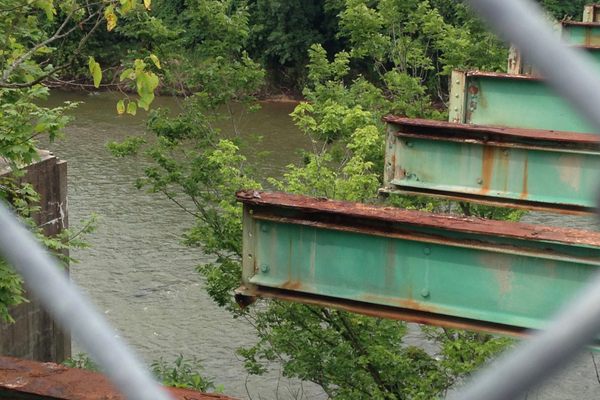About
The former town of Times Beach, Missouri, was a community located on the famous Route 66 that ended up being the site of one of the largest environmental disasters in U.S. history when, like something out of a superhero origin story, the motor oil used to control dust in the town was laced with toxic waste.
In the early 1970s, the city of Times Beach hired Russell Bliss to spray its 23 miles of unpaved streets with used motor oil to help control the town's rampant dust problem, a technique Bliss had previously used in horse stables, as well as on his own property. Unbeknownst to his civil employers, however, Bliss, a waste hauler by trade, had also been hired by a company called IPC to dispose of a toxic waste material known as dioxin, which is generated by the production of Agent Orange and hexachlorophene, a chemical once widely used in disinfectants. In an effort to kill two birds with one stone, Bliss combined the chemical waste with his motor oil and proceeded to spray the mixture at various sites around Missouri. This shady spraying continued for four years between 1972 and 1976.
In 1971 the U.S. Center for Disease Control (CDC) responded to reports of widespread, unexplained deaths of horses, birds, and other small animals, as well as acute poisoning symptoms including headaches, nosebleeds, stomach pain, diarrhea, and skin rashes experienced by people living in and around the properties where Bliss had sprayed. Soil tests conducted by the CDC revealed high levels of dioxin at three locations throughout the Missouri town, but the extent of the contamination remained unclear. It wasn't until 1982 when Environmental Protection Agency (EPA) documents relating to the Missouri dioxin contamination cases were leaked that the residents of Times Beach learned of the connection between Bliss and the toxic chemical. By then over a decade had passed since Bliss had sprayed the town's roads.
In 1982, EPA soil tests revealed dioxin levels in Times Beach sediments to be well above what the agency considered safe. The day after the EPA completed its soil sampling, the nearby Meramec River overflowed its banks, resulting in the worst flood in the town's history. As the waters began to recede and citizens began looking toward rebuilding their devastated town, the results of the EPA tests were made public; those who had fled in advance of the flooding were advised not to return while those who had remained were told to leave and take nothing with them. The entire town of Times Beach was evacuated and declared a Superfund site in 1983, and the town was officially disincorporated in 1985.
Though dioxin was once believed to be among the world's most dangerous chemicals, today researchers remain divided on just how toxic dioxin really is, leading to speculation as to whether the town's evacuation was even necessary. Unlike the residents of the notorious Love Canal, Times Beach residents lived for years in their contaminated town without ever suspecting something was amiss. Even Russell Bliss, the man at the center of the crisis, appears to have suffered no ill-effects from his exposure to the substance.
In 1999, following extensive cleanup efforts, the EPA declared Times Beach safe and the land was converted into Route 66 State Park. By 2001 the site had been removed from the Superfund list.
Update: As the site has been declared safe, there are no longer any warnings or caution signs and is largely unremarkable.
Related Tags
Know Before You Go
Community Contributors
Added By
Edited By
Published
August 11, 2014
























